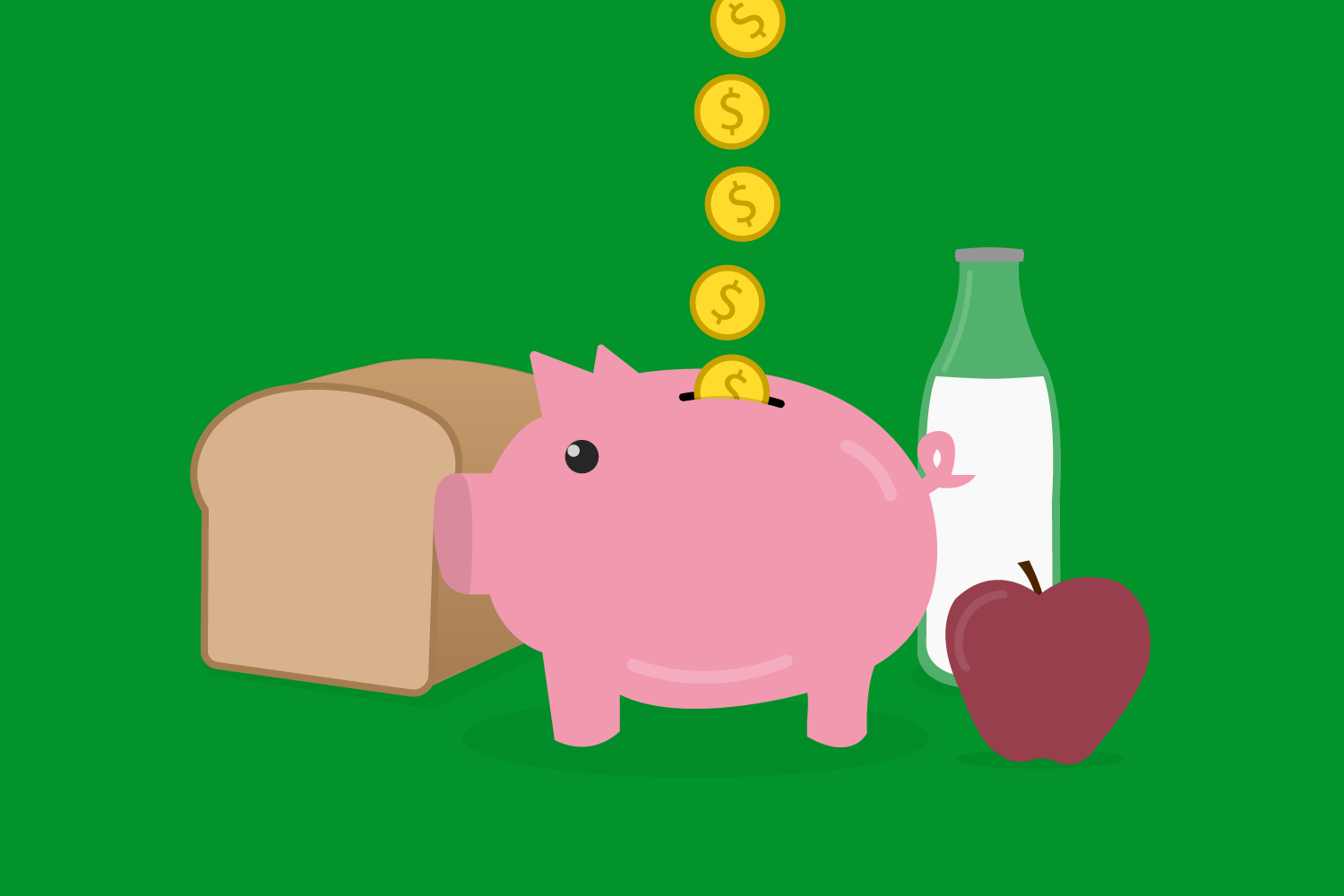There are few constants in life, and one of those constants is food. It is a necessity and will always cost money. Grocery shopping can either be really fun or really stressful (or even both at the same time). Trying to save money on food can seem like a daunting task, but all it really requires is just a little bit of extra effort and some suburban-mom-level-bargain-hunting skills.
1. Become a Kroger Plus member.
This is quite possibly one of the best decisions you will ever make. Signing up for Kroger Plus account is totally free and you can start reaping the benefits immediately. You’ll save money on so many items, and you can earn fuel points (and you always save three cents per gallon at a Kroger pump). However, what’s most rewarding is seeing how much money you saved at the bottom of each receipt after every trip.
If you’re going to Kroger, be sure to go on Friday because there are WAY more deals than there are throughout the week. I really like those Chobani flip yogurts, and sometimes I can score those on a 10 for $10 deal (also, secret: you don’t have to buy a certain amount of an item to reap the sale price. Kroger will discount a single item the same way it would if you actually got the 2 for $4 or whatever the deal was).
2. Go to Aldi first.
Even though it’s a pain, shopping at multiple grocery stores really does give you the best savings. Before you head anywhere else, go to Aldi. Everything is insanely cheap, and you really never know what you’ll find.
Aldi keeps their prices as low as possible, which is why you can get a can of tomato soup for $.49 and a pound of Brussels sprouts for $1.99. Aldi doesn’t have everything, but they’ve got the basics, and it’s beyond worth the extra trip. The next time you grocery shop, go there first, and if they don’t have everything you needed, head to Kroger and take advantage of your brand new Kroger Plus status.
3. Buy versatile ingredients.
The best way to make your money stretch is to buy versatile ingredients. Get the basics, like quinoa, pasta and bread and build off of that. Pasta sauce can double as sauce for noodles and mini pizzas. Shredded parmesan cheese is good on SO many things. Veggies like asparagus, tomatoes and Brussels sprouts are great on their own or added to soups and other recipes.
Buy food that’s versatile enough to work in a variety of ways, so you don’t get tired of eating it all the time. (Confession: I eat Brussels sprouts at least two or three times a week, and it might be a problem, but I’m not tired of them yet).
4. Why are you still buying name-brand products? Seriously stop.
In some cases, the name-brand really is better. In most cases, you can’t tell the difference. So please, stop buying name-brand stuff. You will save SO much money.
5. Set spending limits.
Eating out will kill your wallet, so it’s important to keep track of how often you’re doing it. Track your spending for a week and see where it’s all going. I like to set my limit at around $5 a week for coffee and $11 a week for food. You’re going to crave Chick-fil-A or Cookout at least once a week, and those things are perfectly fine in moderation.
6. Treat yo’ self (in moderation).
Let’s be real, walking down the ice cream aisle is the best part of any grocery trip. Whatever your sweet tooth might crave, resist buying it until you’re actually going to eat it. It’s tempting to buy on every grocery trip, but waiting for the weekend (or a really bad day) will make it that much sweeter, pun intended.
Happy shopping!



